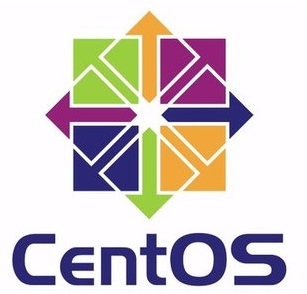Red Hat’s Disruption of CentOS Unleashes Storm of Dissent

Five weeks after angering much of the CentOS Linux developer community by unveiling controversial changes to the no-cost CentOS operating system, Red Hat has unveiled alternatives for affected users that give them several options for using existing Red Hat products.
But for many users of CentOS Linux, the Red Hat options won’t solve the huge problems that were created for them when Red Hat announced Dec. 8 that CentOS would no longer include a stable version with a long, steady future. Instead, CentOS will now only be offered as a free CentOS Stream operating system which will be a rolling release with frequent updates, essentially turning it into a beta OS that is no longer suitable for reliable production workloads. For users who have deployed CentOS throughout the internet, data centers, corporate and business uses and more, this is a potentially major blow.
 Under Red Hat’s plans, the existing stable version of CentOS will become the CentOS Stream project on Dec. 31, 2021, turning the OS into a rolling version which many users will now need to replace in their operations by the deadline. For many of them, replacing the OS that solidifies their IT infrastructures will not be a small or simple task, which is why users have risen up to complain and voice frustrations on a wide range of developer websites. Previously, the latest CentOS 8 version had been expected to have support through 2029.
Under Red Hat’s plans, the existing stable version of CentOS will become the CentOS Stream project on Dec. 31, 2021, turning the OS into a rolling version which many users will now need to replace in their operations by the deadline. For many of them, replacing the OS that solidifies their IT infrastructures will not be a small or simple task, which is why users have risen up to complain and voice frustrations on a wide range of developer websites. Previously, the latest CentOS 8 version had been expected to have support through 2029.
One Reddit user, DocToska, posted after the Red Hat announcement that his company’s open source project has been using the latest CentOS releases since CentOS 4. “Our flagship product is running on CentOS 8 and we *sure* did bet the farm on the promised end of life of 31st May 2029,” wrote DocToska. “CentOS Stream is supposedly now the new answer, but the obvious downside is that stability and dependability get sacrificed on the altar of bleeding edge.”
Similar criticisms can be found across open source community message boards and websites.
Red Hat’s suggested options are that CentOS users can switch to no-cost versions of Red Hat Enterprise Linux (RHEL) for small production workloads or for customer development teams, according to the company. But those options are limited to 16 free licenses for RHEL, which won’t be sufficient for many users that have CentOS running on dozens to hundreds to thousands of servers.
How Did This Situation Get Here?
Founded in 2004, CentOS – which stands for Community Enterprise Linux Operating System – was based on Red Hat Linux 2.1 code before Red Hat Linux evolved and was aimed directly at businesses and became RHEL.
When Red Hat announced the coming changes back in December, the company said the move to CentOS Stream “represents the best way to further drive Linux innovation,” while giving open source developers, hardware and software creators, individual contributors and systems administrators “a closer connection to the development of the world’s leading enterprise Linux platform.”
At the same time, Red Hat said it also realizes that these changes and these RHEL alternatives will not be simple adjustments for many CentOS users.
“We know that these programs don’t address every CentOS Linux use case, so we aren’t done delivering more ways to get RHEL easily,” the company said. “We’re working on a variety of additional programs for other use cases, and plan to provide another update in mid-February.”
Under Red Hat’s plans, CentOS Stream will be the collaboration hub for RHEL and a continuously-delivered platform that will lead to the next minor versions of RHEL. Red Hat’s Fedora Linux project will be the place for major new operating system innovations, thoughts, and ideas that will essentially lead to future major versions of RHEL.
After the first 10 years of its life as a community open source project, CentOS in 2014 joined forces with Red Hat, transferring its trademarks and re-organizing after a bit of internal turmoil had occurred.
“Prior to this move, the effort was completely volunteer motivated; this change added the muscle of Red Hat’s engineering expertise and resources to the rebuild,” Brian Exelbierd, the community business owner for Red Hat Enterprise Linux product management, told EnterpriseAI. “CentOS was brought into the Red Hat fold to help drive a more stable development platform for a variety of fast-moving projects at the time, including RDO, oVirt, Gluster and OpenShift Origin (now OKD).”
Under the arrangements, Red Hat got the CentOS trademarks and provides additional engineering resources to the CentOS project community as well as funding for events and related expenses, said Exelbierd.
The RHEL alternatives for CentOS users now will include licenses for up to 16 systems running RHEL in production at no-cost, he confirmed, with additional options to come to try to accommodate larger users.
“These folks should also be contacting us,” said Exelbierd. “Emails to [email protected] help us scope these programs and understand needs, especially amongst organizations that have never had a relationship with Red Hat. On top of this, Red Hat is always evolving. A lot of the focus in this announcement has been around how our development model has changed. But our business models change, too.”
It’s Not About the Money: Red Hat
“We do not have a goal of converting every CentOS Linux user into a revenue RHEL customer,” said Exelbierd. “This is the source of our new no-cost and low-cost programs. If someone knows they need the value of RHEL and want to explore that, talk to us. The costs associated with this are not as simple to calculate as ‘go to the website and click Buy RHEL 400,000 times.’”
The shift to CentOS Stream is coming because Stream began gaining traction with organizations like Facebook, Intel and others, causing Red Hat to shift its direction and funding to Stream, said Exelbierd. “It wasn’t a decision that we made lightly, just like the decision we made to fully shift to RHEL from Red Hat Linux decades ago. We also didn’t make it in a vacuum. We worked with the CentOS Board to examine the implications and effects and how we can come together to work on those. We want to help users that previously relied on CentOS Linux maintain their operations, whether it’s with a new RHEL program with CentOS Stream or Fedora. The Enterprise Linux ecosystem has solutions for almost every need imaginable.”
CentOS Co-Founder: Not the First Time Red Hat Has Disrupted CentOS
The latest Red Hat move involving CentOS is not unprecedented, CentOS co-founder Gregory M. Kurtzer, told EnterpriseAI. “Actually, I don't blame Red Hat at all for this but this is the second time that they've done something like this in history.” The first time was when Red Hat moved to RHEL from Red Hat Linux 9 and preceding versions, he said. When the company unveiled RHEL in 2002, it ended support for prior versions almost overnight, without warning, according to Kurtzer. For the open source community, that was a big problem because it left users scrambling to deal with those changes. The disruption led to the creation of CentOS and its development and adoption as an OS for free use with a long road map for users.
“So, Red Hat has already done this once,” Kurtzer said. “It basically created CentOS [by moving to RHEL from Red Hat Linux]. If they wouldn't have done that CentOS would not have ever had a reason to be.”
Kurtzer said he understands that Red Hat is a business and is looking out for its own interests, and that the company has done a lot for open source and Linux in general.
“I support them and I want them to be successful,” he said. “But at the same time, they never should have acquired CentOS. They never should have done that because it's a conflict of interest right from the beginning. It competes with their Enterprise Linux product. I do not have visibility and insight as to what motivated this decision for them. But I can tell you that it doesn't seem to be in the best interest of the community.”
To offset the disruption to CentOS users, Kurtzer quickly unveiled his own plans on the CentOS blog on the day of Red Hat’s announcement to create a replacement, called Rocky Linux, for the stable version of CentOS. “I am considering creating another rebuild of RHEL and may even be able to hire some people for this effort. If you are interested in helping, please join the HPCng Slack," he wrote.
In a community update on the Rocky Linux website on Jan. 20, the group announced its plans to set up a build infrastructure, an engineering structure, a donations mechanism and an upcoming move to the Mattermost collaboration platform that can handle its growing membership, which has already reached 10,000 people in a month.
Kurtzer said an initial release of Rocky Linux is expected by the second quarter of 2021.
The original CentOS development team has been operating with only five primary developers, which has often been tough on the team members due the constant demands of the work, said Kurtzer. The new Rocky Linux team has about 75 primary members today and they hope to expand that in the future to at least several hundred developers.
Analysts: Not Red Hat’s Best Moment
The shift announced by Red Hat for the future path of CentOS has already damaged the company’s standing in the open source community, said Bill Weinberg, the principal open source strategist and analyst with Linux Pundit.
“Red Hat lost a lot of good will among IT pros and developers with their announcement of the end-of-life for CentOS and of their plan to slot in a rolling release in its place,” said Weinberg. “While open source developers and enterprise IT teams are a flexible and pragmatic audience, they will likely see the move by Red Hat as an attempt to dictate use cases formerly served by CentOS and to force-fit conversion to commercial RHEL.”
The company’s line that it created CentOS Stream as a replacement to keep pace with the evolving IT world “fly in the face of the real reason organizations deployed stable CentOS - to track RHEL without being beholden to Red Hat,” said Weinberg. “The move also did a disservice to integrators, ISVs, MSPs and others whose core business viability depends on the release cycle and particulars of CentOS.”
At the same time, “CentOS was always a thorn in the side of Red Hat, giving small and mid-sized organizations a functionally equivalent free of charge RHEL stand-in, even after Red Hat acquired the organization behind the distro,” he said. “Surely also Red Hat must see CentOS as superfluous and distracting to its centerpiece offering. But I don’t see how the two free-of-charge RHEL use case distributions will assuage community rancor, rebuild good will or even serve to streamline conversion of free use to SLA-based RHEL consumption.”
Another analyst, Rob Enderle of Enderle Group, agreed.
“There is a constant tension between those that build platforms and those that build on those platforms,” said Enderle. “The platform builders need to advance their platforms so they remain competitive. These advancements can still break existing code, forcing those that build on the platforms to update their apps, which often introduces extra cost without much, if any, balancing revenue.”
All of this means that users rarely get a genuinely stable platform to meet all their needs, he added.
“But CentOS was an exception to that rule,” said Enderle. “It is likely that the incremental cost of maintaining CentOS as a stable platform exceeded the incremental revenue provided by those that wanted the stability. Economics likely drove this decision. Still, it also created an opportunity for someone else to step in with a Linux distro that now meets this newly unmet need for stability.”
That could have been Red Hat, but it appears the company has declined that direction, said Enderle. “You’d think Red Hat would address this need with a virtualization layer that addressed it. Still, this move does provide an opportunity for CentOS’s founder to refill the product gap he initially filled with the stable [version of] CentOS.”













